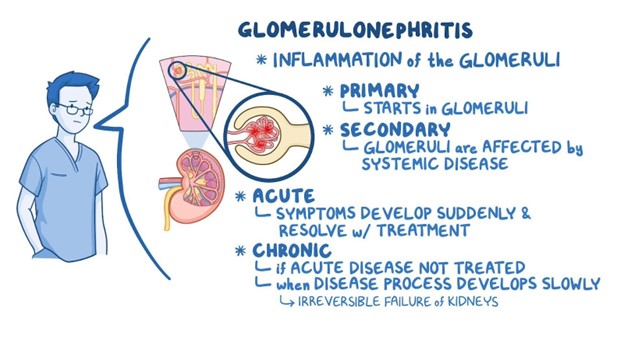An eight-year-old with nephrotic syndrome is pale, lethargic, and has ascites. To determine if the ascites is increasing, the nurse should (chose one best answer):
assess the bowel sounds
Frequently ambulate child
Weigh child weekly
monitor and measure the abdominal girth
The Correct Answer is D
A. Assess the bowel sounds:
Bowel sounds are not directly related to the assessment of ascites. Bowel sounds are more relevant in assessing gastrointestinal function and peristalsis. While bowel changes could potentially be a sign of complications, monitoring abdominal girth is more specific to tracking ascites.
B. Frequently ambulate child:
While ambulation is important for overall health, it's not a direct assessment method for monitoring ascites. Ambulating a child might have benefits, but it won't provide specific information about the presence or progression of ascites.
C. Weigh child weekly:
Weekly weighing can provide some information about overall fluid balance, but it might not be as sensitive as measuring abdominal girth when it comes to detecting changes in ascites. Additionally, monitoring weight alone might not give insight into the distribution of fluid in the abdominal cavity.
D. Monitor and measure the abdominal girth.
Explanation: The presence of ascites (accumulation of fluid in the abdominal cavity) in a child with nephrotic syndrome could indicate worsening kidney function and fluid balance. Monitoring and measuring the abdominal girth is a reliable way to assess changes in the amount of fluid accumulation over time. An increase in abdominal girth could suggest a worsening condition.
Nursing Test Bank
Naxlex Comprehensive Predictor Exams
Related Questions
Correct Answer is D
Explanation
A) Absence of proteinuria:
Chronic glomerulonephritis often involves damage to the glomeruli in the kidneys, which can lead to the leakage of protein into the urine, resulting in proteinuria. The absence of proteinuria would be an unexpected finding in a patient with chronic glomerulonephritis. Therefore, this choice is incorrect.
B) Serum phosphorus 4.0 mg/dL (within expected reference range):
Serum phosphorus levels within the expected reference range are not directly related to chronic glomerulonephritis. While abnormalities in electrolyte levels might occur due to kidney dysfunction, serum phosphorus within the normal range is not a hallmark finding of glomerulonephritis. Therefore, this choice is incorrect.
C) Serum potassium 3.8 mEq/L (within the expected reference range):
Similar to serum phosphorus, serum potassium levels within the normal range are not specific to chronic glomerulonephritis. Kidney dysfunction can indeed affect electrolyte levels, but a serum potassium level within the normal range doesn't provide specific information about glomerulonephritis. Therefore, this choice is incorrect.
D) BUN 50 mg/dL (elevated):
Blood Urea Nitrogen (BUN) is a waste product that is filtered by the kidneys. Elevated BUN levels indicate impaired kidney function, as the kidneys are less efficient at filtering and excreting waste products. Chronic glomerulonephritis can lead to progressive kidney damage, which can result in elevated BUN levels due to decreased filtration and clearance. Therefore, an elevated BUN level is an expected finding in a patient with chronic glomerulonephritis.

Correct Answer is ["2"]
Explanation
The nurse should administer 2 tablets.
Here's the calculation:
650 mg / 325 mg per tablet = 2 tablets
Since the nurse should administer a whole number of tablets, the answer is 2 tablets.
Whether you are a student looking to ace your exams or a practicing nurse seeking to enhance your expertise , our nursing education contents will empower you with the confidence and competence to make a difference in the lives of patients and become a respected leader in the healthcare field.
Visit Naxlex, invest in your future and unlock endless possibilities with our unparalleled nursing education contents today
Report Wrong Answer on the Current Question
Do you disagree with the answer? If yes, what is your expected answer? Explain.
Kindly be descriptive with the issue you are facing.
